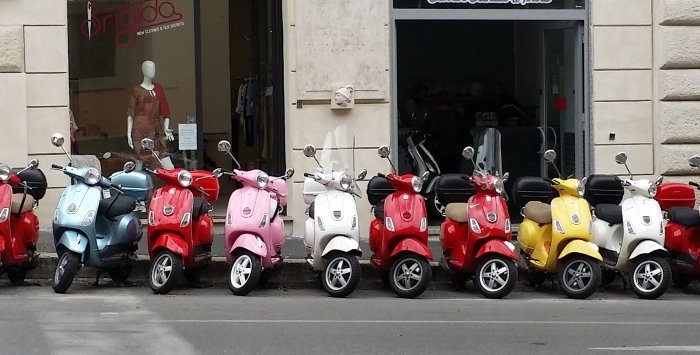When visiting South Korea one of the most thought-provoking and heartbreaking day trips is a DMZ tour from Seoul. A DMZ tour will take you on a journey through the history and ongoing ramifications of the Korean War, a conflict that took place between 1950 and 1953.

To many, the Korean Demilitarized Zone imparts images of two opposing soldiers staring each other down from across a room. Pictures of devastated fans are splashed across the media as their favourite K-Pop and K-Drama idols leave the stage to do their mandatory military service.
After visiting the DMZ, you will understand the sacrifices and dangers that the South Korean people face each day and how it impacts on their national identity.
Tips for Planning a DMZ Tour
If you are visiting Seoul, a DMZ tour should be on the top of your list of places to visit but there are a few things you need to know before you go.
- Book early as only 50 buses are allowed into the DMZ each day.
- You need your Passport to enter the DMZ.
- Be on time to attractions.
Each bus entering the DMZ is allotted an entry and exit time and must run to a strict timetable. Being back at the bus on time will allow everyone to visit all the DMZ attractions in the allocated time slot.
A passport is necessary to enter the DMZ and if one bus passenger forgets their passport the whole bus will be refused entry into the DMZ.
Click here to book a DMZ Tour from Seoul

A Brief History of the DMZ
North Korea invaded South Korea on the 25th of June 1950, marking the beginning of the Korean War. The North Korean invasion was swift as the military were well trained and supplied with Russian weapons.
South Korea looked to the USA and United Nations for support as they were poorly armed and lacking in combat experience. The battles were bloody and hindered by harsh winters and rugged landscapes.
The fighting ended with a cease fire when the military commanders of North Korea, China and the USA signed an armistice agreement to end the hostilities on the 27th of July 1953.
The Korean Demilitarized Zone was created under the Korean Armistice Agreement. This 250 km long and 4 km wide buffer zone is divided in two, separating North Korea from South Korea.
Imjingak Park
After armistice, the DMZ not only divided North and South Korea, but also families, as all forms of communication between North and South Korea were cut off.
Imjingak Pyeonghwa Nuri Park overlooks the DMZ and for more than 70 years has been known as the crying place for those separated from their families in the north.
Each weekend families visit, often placing colourful message ribbons along the barbwire fence in hope that their words will drift on the wind to their loved ones. As time passes fewer people come and all hope of being reunited is taken to the grave.
Imjingak Park has a host of historical attractions and memorials. The Freedom Bridge, the Peace Bell, a bullet ridden steam locomotive and the Mangbaedan Altar are just some of the highlights of a visit to the park.

Imjingak Peace Gondola
The Imjingak Peace Gondola is an optional activity on a DMZ tour from Seoul. The cable car takes you into the Civilian Control Zone (CCZ) of the DMZ.
The gondola glides peacefully over landmine fields which contains some of the estimated 2 million landmines that are said to be scattered across the DMZ.
The cable car leaves Imjingak Station and crosses over to the DMZ Station. From here you can take in views of South Korea from the Imjingang Observatory.

The Third Infiltration Tunnel
One of the most alarming finds of the DMZ are the four North Korean Army tunnels that have been found on the South Korean side of the border. These tunnels were formed with the intention of invasion and many more may have gone undetected.
The Third Tunnel was discovered in 1978, after Kim Bu-Seong, a North Korean defector, informed the South Korean Military of its existence.
During a DMZ tour you will have the chance to enter the Third Tunnel which is 73 metres underground. The Third Tunnel has a length of 1,635 metres and leads 435 metres into South Korean soil. Once inside you will see the concrete barricades that seal the tunnel from North Korea.
The tunnel is steep and in parts you will need to hunch over as the ceiling is low. It takes around half an hour to complete the round trip.
Keep in mind that the Third Tunnel can be challenging for asthmatics and people who struggle with claustrophobia. Note that photos are not allowed to be taken inside the tunnel.
Within the grounds is an interesting museum which gives more information on the four tunnels and the wildlife that flourish within the uninhabited DMZ. You will also find peaceful gardens and ponds which are a pleasant place to stroll after visiting the depths of the Third Tunnel.

The DMZ Sign & 3rd Tunnel Sculpture
The first thing you notice when you visit the grounds of the Third Tunnel is the colourful DMZ sign which is adorned with a helmet, barbwire, landmine sign and a flower. This is a popular place to take a souvenir photo and admire the moving 3rd Tunnel sculpture which sits beside it.

The Dora Observatory
The Dora Observatory overlooks the DMZ and North Korea. The top level of the observatory has a collection of high-powered binoculars which allow you to see the people, the communication blocking towers and buildings that sit on the North Korean side of the DMZ.

Looking across the DMZ you will see the opposing North Korean and South Korean flagpoles. These flagpoles featured in the famed flagpole war, a fierce competition to see which country could build the tallest flagpole. I will not give away the winner, I leave that as a surprise on your DMZ tour.

From the viewing platform you can also see the lush green landscapes of the DMZ. This area has been uninhabited by humans for over 70 years and in that time has become a thriving ecosystem which supports a diverse range of wildlife, including many endangered species.
Unification Village
One of the saddest stories of the DMZ is the fate of those trapped in the villages on the South Korean side of the DMZ. These people are only allowed to leave their village under strict guidelines and curfews are in place to make sure they return at designated times.
The villagers have internet and can buy what they need online but their purchases can only be picked up at the military checkpoint. On the upside, villagers are exempt from paying tax and do not have to participate in mandatory military service.
The Unification Village is one of the farming villages within the DMZ. Because chemical fertilizers are not allowed in the DMZ, these villages have become famous for their fresh organic produce and ginseng which is of the finest quality.
We stopped off at Unification Village for lunch and visited the adjoining shop selling a fabulous range of organic products, ginseng skincare lotions and souvenirs.

The Red Suspension Bridge
To reach the Red Suspension Bridge you must take a 10-minute walk up a well shaded woodland trail.
Walking along the 220 metre Red Suspension Bridge feels like you are walking on the roof of the woodland as you look down through the canopy of trees. Once on the other side you can visit the waterfall which is at its best after heavy rains.
Click here to book a DMZ Tour from Seoul

Last Words on a DMZ Tour from Seoul
Taking a DMZ tour from Seoul was a major highlight of our trip to South Korea. Not only did we learn that the DMZ is one of the most militarised places on the planet, but we also came away with a newfound respect for South Korea.
Is the DMZ worth visiting? Most definitely yes! A DMZ tour from Seoul will open your eyes to the unbearable sadness and courage of the South Korean people.
If you are looking for Seoul airport transfers check out our article on How to Get From Incheon Airport to Seoul.
PIN THIS TO YOUR TRAVEL PINTEREST BOARDS ↓






